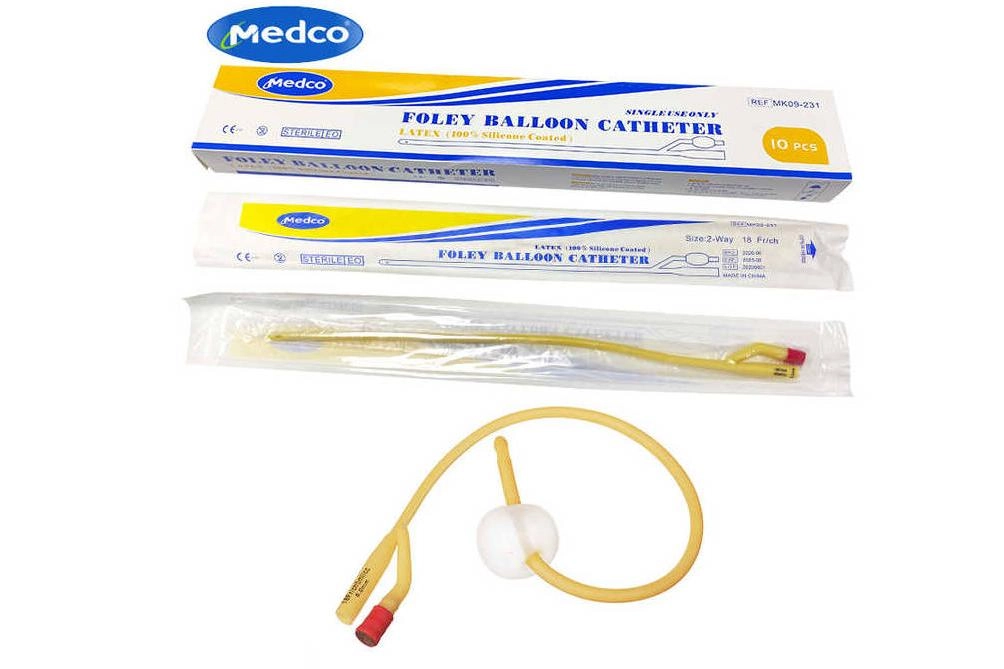
What Decides How Long a Catheter Stays
A Person’s Health and Challenges
How long someone needs a Bard Foley catheter depends a lot on their health and specific issues. People with long-term conditions, like diabetes or nerve problems, often need it for a while. Their bladders might not work right. Folks recovering from surgery or having trouble peeing also rely on catheters longer. But leaving one in too long can stir up problems. You could get urinary infections, bladder twitches, or crusty buildup inside the tube. Regular visits with a doctor help catch these risks early. They keep things under control.
The Kind of Catheter and What It’s Made Of
The type of Bard Foley catheter and its material make a big difference in how long it can stay in. Latex ones are cheap and bendy. They’re solid for short-term use, like after a quick procedure. But they’re not great for long stretches. They can wear out or make some folks itchy. Silicone catheters are tougher and kinder to the body. They’re perfect when someone needs a catheter for weeks or months.
What Medical Rules Say
Health experts say catheters should only stay in as long as they’re truly needed. The CDC is clear about this. Leaving them in too long can lead to infections. For short-term use, swap the catheter every 2 to 4 weeks. If it’s in for the long haul, it might stay up to 12 weeks. This depends on how the patient’s doing and what their doctor thinks. Following these rules keeps things safe. It helps avoid nasty complications like infections or clogs.
Doctors use these guidelines to make good calls. They check in with patients often. If the catheter’s not needed anymore, they pull it out. If it’s still necessary, they make sure it’s working fine. Every patient’s different. Someone with a temporary problem might have a shorter timeline than someone with a lifelong illness. These rules give doctors a clear path. They balance the catheter’s benefits with its risks.
Good Ways to Manage Foley Catheters
Daily Checks by Health Experts
Doctors and nurses need to stay on top of Foley catheters. They check every day to see if it’s still needed. Can it come out? Is it doing its job? They look for trouble signs, like infections, leaks, or blockages. Spotting problems early lets them fix things fast. This keeps patients out of danger. A small issue can grow into a big one if ignored.
These checks aren’t just about the catheter itself. Nurses talk to patients about how they feel. They look for redness or swelling where the catheter goes in. They also make sure urine is flowing like it should. If anything seems off, they dig deeper right away. This hands-on care makes patients feel safer and more at ease.
Staying Clean
Keeping things clean is huge when dealing with a Bard Foley catheter. Patients or their caregivers should wash around the urethra often. Just use mild soap and water. This stops germs from building up. When putting in, cleaning, or swapping the catheter, sterile tools and methods are a must. They lower infection risks. Bard’s care tips are simple but effective. Following them adds extra protection.
Caregivers need to know the right way to clean. Patients should learn the basics too, especially if they’re at home. Simple stuff, like washing hands before touching anything, matters a lot. Skipping these steps can lead to infections that are hard to shake. Cleanliness is the best way to stay safe.
When to Change or Remove
Swapping or taking out a Foley catheter at the right time stops trouble. Infections and buildup are less likely. For people needing it long-term, doctors plan regular changes. They follow medical advice and the patient’s needs. If the catheter leaks or feels uncomfortable all the time, it’s got to go, even if it’s not time yet. Teaching patients to notice warning signs helps. They can speak up when something’s wrong.
The goal is to stay ahead of problems. Patients should know what to look for, like cloudy urine or pain. Doctors need a clear plan for when to swap catheters. This keeps the catheter from staying in too long. Timing matters a ton for keeping things safe.
By sticking to these steps, looking at each patient’s situation, and following doctor’s advice, healthcare folks can use Bard Foley catheters well. This keeps risks low and patients safer.
Medco’s Foley Catheters: A Smart Choice
.webp)
What Makes Medco’s Catheters Special
Great Materials and Clever Design
Medco’s Foley catheters are built to last. They’re made with top-quality materials. Their silicone design is gentle on the body. It’s great for long-term use and rarely causes allergies, unlike latex. Silicone also fights off crusty buildup. This keeps the catheter working longer. Smooth edges and pointy tips make putting it in or taking it out easier. They don’t irritate the urethra as much, which patients really notice.
Medco has coated catheters too. Slippery ones get slick with water. They go in smoother and feel better. Germ-fighting coatings stop bacteria from growing. This lowers infection chances. These extras show Medco cares about safety and quality. They’re always thinking about how to make things easier for patients.
Comfy and Low-Risk
Medco puts comfort first. Their catheters are flexible and fit the body’s shape. This matters for people who need them for a long time. The balloon at the tip puffs up evenly. It stays in place without pressing too hard on the bladder. This cuts down on discomfort.
Medco’s catheters tackle common problems too. Their anti-kink tubes keep urine flowing, even if the tube gets bent. This stops infections or blockages. Medco’s clear care instructions help doctors and caregivers keep things clean. These steps make infections less likely and keep patients feeling better.
Why Pick Medco for Catheters?
Check Out Medco’s Options
Medco’s a go-to name for Foley catheters. They focus on quality, new ideas, and caring for patients. With top-notch tech and strict standards, they meet all sorts of needs. Whether it’s a hospital or home care, Medco’s products get the job done.
Doctors can pick from a big range of Medco catheters. Short-term latex ones work for quick needs. Long-term silicone ones with special coatings are great for ongoing issues. Every product is made to work well and keep patients comfy. Medco’s designs are practical but thoughtful.
For folks with chronic conditions or healing from surgery, Medco’s catheters bring peace of mind. Their research-backed designs work reliably. They also cut down on risks like infections or pain. This makes a tough situation feel more manageable.
Medco offers great service too. Their guides on how to insert, care for, and swap catheters are easy to follow. They line up with expert advice, pushing for regular checks and clean habits. This helps doctors and caregivers do their best for patients. It’s all about better care.
Choosing Medco’s Foley catheters lets doctors handle patient needs with confidence. It makes the whole experience safer and more comfortable from start to finish.
FAQ
Q: How long can a Bard Foley catheter safely remain in place?
A: The duration a Bard Foley catheter can be left in situ depends on the patient’s condition and medical guidance. Typically:
Short-term use: A few days to two weeks, often for post-surgical or acute conditions.
Long-term use: Up to 4–12 weeks, but only with regular monitoring and replacement as advised by a healthcare provider.
Always follow the recommendations of a medical professional, as prolonged use increases the risk of infections or complications.
Q: What factors influence how long a Foley catheter can stay in?
A: Several factors affect the duration, including:
The patient’s overall health and medical condition.
The type of catheter material (e.g., silicone or latex).
The presence of any infections or complications.
The purpose of catheterization (e.g., temporary post-surgery or chronic bladder issues).




